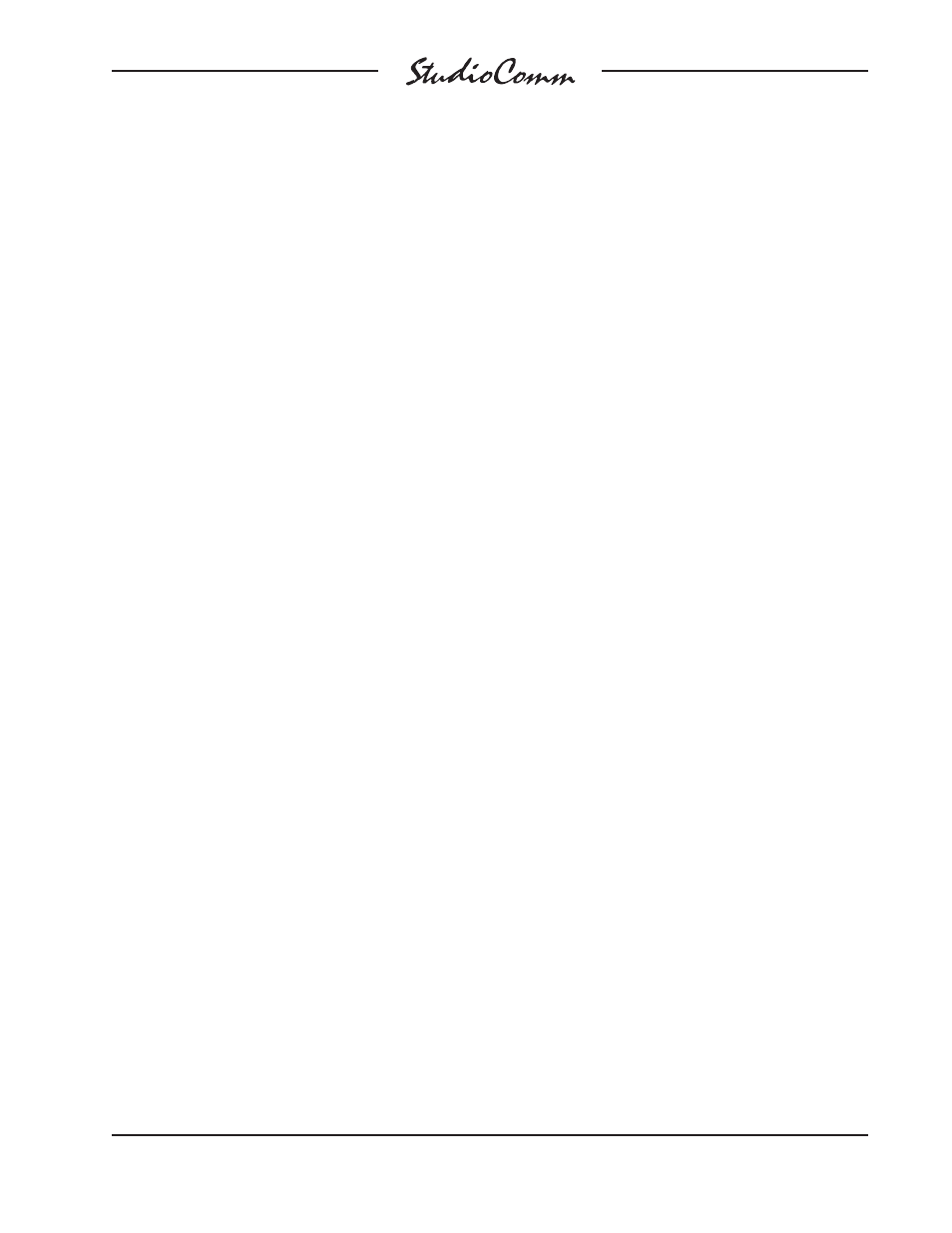Model 76dba to control console connections, Hot” disconnection of control consoles – Studio Technologies 76DBA V.3.00 User Manual
Page 47

Model 76DBA/77B User Guide
Issue 1, November 2010
Studio Technologies, Inc.
Page 47
for Surround
this way: the sample rate of an input signal
can range from 1/6 to six times the Model
76DBA’s output sample rate, with the ad-
ditional restriction that it must be no less
than 8 kHz and no more than 216 kHz.
The Model 76DBA’s output sample rate
is determined by the selected timing ref-
erence (sync) signal and, if required, a
configured value. If a word clock, DARS
(AES11), or AES3id signal is the des-
ignated sync source its rate will be the
Model 76DBA’s output sample rate. If a
video sync signal is connected, the Model
76DBA’s sample rate is selected as part
of the configuration process.
So in practice what can the SRC function
accomplish? If the output sample rate is
48 kHz then a signal connected to stereo
input C can have a sample rate from 8 to
216 kHz. Or, as another example, if the
Model 76DBA’s output sample rate is 96
kHz a signal connected to stereo input C
can have its sample rate range from 16 to
216 kHz.
As useful as allowing one disparate
sample rate to be converted to another, it
may be the ability of the Model 76DBA’s
SRC function to re-synchronize a signal
that proves most valuable. For example,
in typical post-production and broadcast
applications all signals will have a sample
rate of 48 kHz. A Model 76DBA and all of
its normally connected input signals will be
“locked” to the main timing reference signal
that supports the 48 kHz sampling rate.
But, as an example, a signal associated
with a portable device, while at a 48 kHz
sampling rate, may not be synchronized
(“genlocked”) to the “house” reference.
Connecting this signal to stereo input C
will cause the SRC function to “lock” it
to the Model 76DBA’s rate, thus allowing
it to be monitored over a loudspeaker
system. In addition, the stereo input C
direct digital monitor output can be con-
nected to other devices that find need
for the now-synchronized signal. In some
cases it may be useful to connect the
stereo input C direct digital monitor output
to the input of a signal router, allowing an
entire facility to access the signal.
Model 76DBA to Control
Console Connections
Figure 7 gives a detailed description of
the signals that connect the Model 76DBA
Central Controller to the one or more
Model 77B or Model 71 Control Consoles.
The Model 76DBA provides a +12 volt
DC power source for use by the control
console’s circuitry. The DC output is
current-limited to minimize the chance
that a short-circuit condition will damage
the Model 76DBA’s circuitry. An asynchro-
nous, bi-directional data interface links the
connected units. The RS-485 hardware
connection scheme operates at a rate of
115.2 Kbit/s and uses an 8-N-1 data for-
mat. The Model 76DBA communicates
with each Model 77B and Model 71 unit
20 times per second, receiving button and
rotary level control information and send-
ing LED and 4-digit display status data.
“Hot” Disconnection of
Control Consoles
There’s no problem relocating one or more
Model 77B or Model 71 Control Consoles
while the StudioComm system is operat-
ing. You can disconnect the 9-pin intercon-
necting cable, move the unit (or units),
and then reconnect without issue. Upon
disconnection of all control consoles the
Model 76DBA Central Controller will mute
the internal digital audio channels as well
